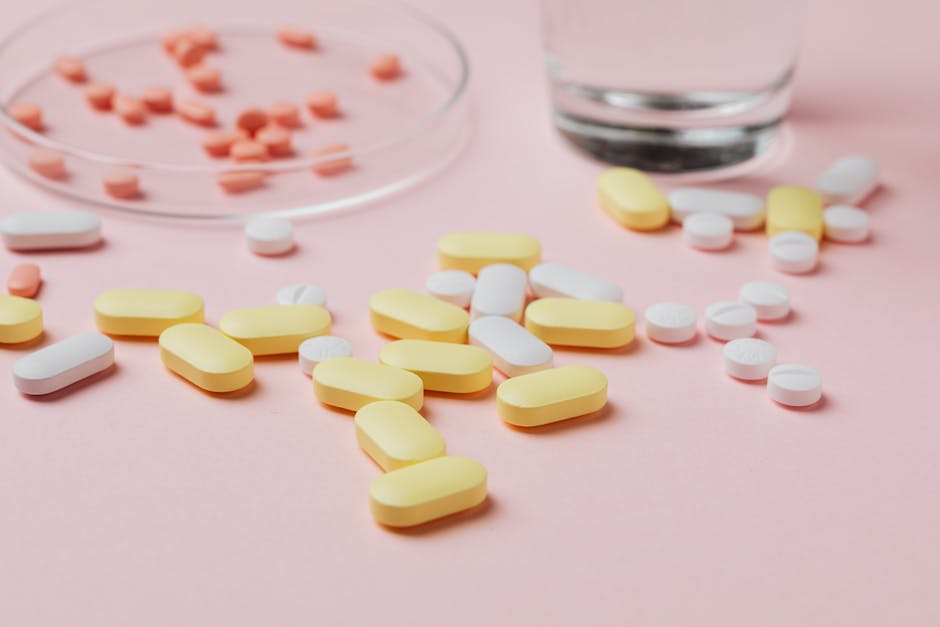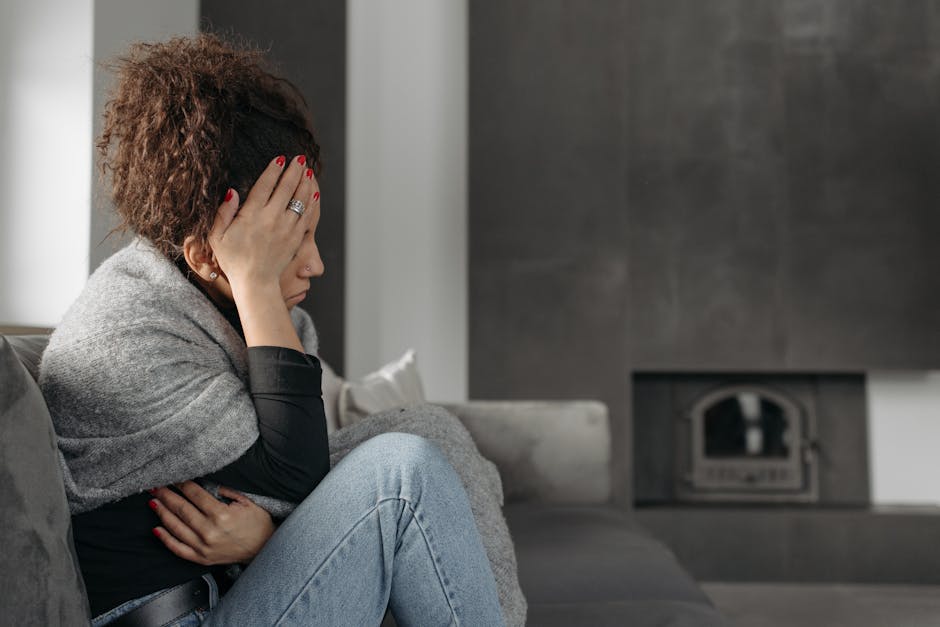Understanding Your Options for Managing Withdrawal at Home
How to ease opiate withdrawal symptoms at home is a critical question for anyone facing the challenge of stopping opioid use. While professional medical supervision is always the safest choice, understanding home management strategies can help you prepare and recognize when professional help is essential.
Quick Relief Strategies for Opiate Withdrawal:
- Stay Hydrated – Drink 2-3 liters of water daily to combat sweating and diarrhea.
- Manage Physical Discomfort – Use hot baths, heating pads, and over-the-counter pain relievers like Ibuprofen.
- Support Digestion – Take anti-diarrheal medication (Imodium) and eat bland, easy-to-digest foods.
- Rest and Distract – Create a comfortable space and keep entertainment on hand.
- Control Temperature – Layer clothing and use fans or blankets to manage chills and sweating.
- Seek Support – Inform a trusted friend or family member who can check on you.
- Know When to Get Help – Call 911 for severe vomiting, chest pain, or thoughts of self-harm.
Important: Opiate withdrawal can be dangerous. This guide provides comfort measures, but professional detox offers the safest path to recovery.
If you’re in Miami or anywhere in Florida, you’re not alone in fearing withdrawal. The symptoms—from muscle aches in the first 24 hours to nausea in the days that follow—are your body readjusting. While rarely life-threatening on their own, complications like severe dehydration or the risk of relapse make medical supervision crucial. This is especially true given that many of the 130 daily opioid overdose deaths in the U.S. occur shortly after detox when tolerance is lowest.
This guide will walk you through practical strategies to manage symptoms at home, while clearly outlining when professional intervention is necessary. Whether it’s prescription painkillers or heroin, this information can help you start a safer recovery journey.

How to ease opiate withdrawal symptoms at home basics:
- opiate withdrawal symptoms
- does gabapentin help with opiate withdrawal symptoms
- herbal remedies for opiate withdrawal symptoms
Understanding Opiate Withdrawal: Symptoms and Timeline
To learn how to ease opiate withdrawal symptoms at home, you must first understand what’s happening. Withdrawal is your body’s response to the absence of opioids after it has developed a physical dependence. It’s important to know that physical dependence is not the same as addiction. Dependence is a physical adaptation, while addiction is a chronic disease involving compulsive drug use despite harm.
The symptoms often feel like a severe case of the flu and unfold in stages.
Early symptoms (6-30 hours after last dose): These include anxiety, agitation, muscle aches, watery eyes, runny nose, sweating, yawning, and insomnia.
Late symptoms (peaking around 72 hours): This stage brings abdominal cramping, diarrhea, nausea, vomiting, dilated pupils, and goosebumps (the origin of the term “cold turkey”).
Psychological symptoms can outlast the physical ones for weeks or months. This period, known as Post-Acute Withdrawal Syndrome (PAWS), involves depression, anxiety, irritability, and intense cravings. PAWS is a major reason why detoxing at home without support is so difficult.
The withdrawal timeline varies based on the opioid used, dosage, duration of use, and your individual health. For short-acting opioids like heroin, withdrawal can start in 4-6 hours and last 7-14 days. For long-acting opioids like methadone, it may not begin for 12-48 hours but can last for months. For more details, see our resources on opiate withdrawal symptoms and how long does it take to withdraw from opiates?. The MedlinePlus Medical Encyclopedia also offers comprehensive information.
The First 72 Hours
The first three days are typically the most intense. Acute physical symptoms peak, combining severe flu-like feelings with profound restlessness and insomnia. Your body is in shock, trying to re-regulate itself without the drug. It’s a difficult period, but knowing these acute symptoms will pass can help you persevere.
Week One and Beyond (Post-Acute Withdrawal)
After the first week, the most intense physical symptoms usually subside, but some discomfort like fatigue and digestive issues may linger. This is when Post-Acute Withdrawal Syndrome (PAWS) often begins. Emotional and psychological symptoms like anxiety, depression, and intense cravings can emerge or intensify, often coming in waves for weeks or months.
This protracted phase is why simply getting through the physical withdrawal isn’t enough. Long-term recovery requires ongoing support, like therapy or treatment programs, to develop coping mechanisms for a life without opioids. For many in Miami and across Florida, this is when professional support becomes essential to steer the emotional challenges of PAWS safely.
How to Ease Opiate Withdrawal Symptoms at Home: A Practical Guide
While professional medical detox is the safest route, this practical guide offers comfort measures to help you manage withdrawal at home. These are not a replacement for medical care.

Before you start, create a safe space. Remove all opioids and other substances from your home. Stock your kitchen and bathroom with supplies. Most importantly, tell a trusted support person who can check on you daily. You should not go through this alone.
Hydration and Nutrition: Fueling Your Recovery
Dehydration from sweating, vomiting, and diarrhea is a serious risk. Aim to drink 2-3 liters of water daily. Take small, frequent sips. Electrolyte-rich fluids like sports drinks or Pedialyte are crucial for replacing lost salts and minerals. For more on safe withdrawal, see the NCBI withdrawal management guide.
Your appetite will be low, but your body needs fuel. Eat small, frequent meals of bland foods. The BRAT diet (bananas, rice, applesauce, toast) is a good starting point, along with crackers, oatmeal, and broth. Avoid caffeine, alcohol, greasy or spicy foods, and high-sugar items, as they can worsen symptoms.
Managing Physical Discomfort: Aches, Chills, and Nausea
To find relief from relentless physical symptoms, try these methods:
- Hot baths or showers with Epsom salts can soothe aching muscles and restlessness.
- Use heating pads for muscle soreness and abdominal cramps, and cool compresses for feverishness.
- Layer loose, comfortable clothing to easily adjust to temperature swings between chills and hot flashes.
- Use over-the-counter medications carefully, following all dosage instructions. Ibuprofen (Advil) or Acetaminophen (Tylenol) can help with aches and pains. Loperamide (Imodium) can manage diarrhea, but use it exactly as directed. For nausea, Dimenhydrinate (Dramamine) can offer relief. Always consult a healthcare professional before taking any OTC medication during withdrawal.
Calming the Mind and Body: How to ease opiate withdrawal symptoms at home
Withdrawal is mentally taxing. Insomnia is common and frustrating. Try to maintain a consistent sleep schedule in a dark, quiet room, and avoid screens before bed. For more tips, see the CDC sleep hygiene tips or our guide on coping with insomnia after opiate detox.
- Relaxation techniques like deep breathing or guided meditation can calm anxiety.
- Light exercise, such as a short walk in your Miami neighborhood, can release endorphins and ease restlessness. Listen to your body and don’t overdo it.
- Distraction is a powerful tool. Watch comforting movies, listen to music or audiobooks, or engage in a simple hobby to give your mind a break from the discomfort.
The Role of Medications and Supplements in Home Withdrawal
When looking for how to ease opiate withdrawal symptoms at home, you’ll find many suggestions for medications and supplements. This is an area where you must proceed with extreme caution. Medical consultation is essential before taking anything, as your body is in a vulnerable state and interactions can be dangerous.

Herbal Supplements and Alternative Medicines: Benefits and Cautions
Many people explore herbal remedies, but it’s important to understand their limitations and risks. Some people find relief with:
- Passion flower for anxiety.
- Valerian root for sleep disturbances.
- Ginger for nausea.
However, kratom is a substance we strongly advise against using. While some claim it helps with withdrawal, it carries significant, poorly understood risks, including potential for seizures and addiction. Kratom withdrawal itself can be a difficult, protracted experience. For more on this, see this research on Kratom risks.
Acupuncture, when performed by a licensed practitioner, is a generally safe option that some studies suggest may help reduce withdrawal symptoms.
Herbal supplements are not regulated by the FDA for purity, potency, or safety. For more on these approaches, visit our page on Herbal Remedies for Opiate Withdrawal Symptoms.
Understanding Prescription Medications for Opiate Withdrawal
Evidence-based prescription medications are highly effective but require that medical supervision is mandatory. They are not for unsupervised home use.
- Clonidine can reduce many physical symptoms like anxiety, muscle aches, and sweating.
- Buprenorphine (Suboxone) and Methadone are the gold standard for medication-assisted treatment (MAT). They prevent withdrawal and reduce cravings and are administered in medically supervised settings, like those available in Miami.
- Gabapentin is sometimes prescribed off-label to help with nerve pain, restlessness, and anxiety.
These powerful medications require a doctor’s oversight to be used safely. You can learn more at Which medications are used in opiate detox? and Does Gabapentin Help with Opiate Withdrawal Symptoms?. Professional medical support is a necessity, not a luxury.
The Risks of At-Home Detox and When to Seek Professional Help
While this guide on how to ease opiate withdrawal symptoms at home offers helpful comfort measures, it’s crucial to understand the limitations and risks of forgoing professional care. Home remedies can’t provide the safety net of medical supervision.
Research shows that people who attempt withdrawal at home have significantly lower long-term success rates. This isn’t due to a lack of willpower; it’s because the physical and psychological distress of withdrawal is incredibly difficult to endure alone, making relapse highly likely.
A structured environment like Summer House Detox Center in Miami provides 24/7 medical monitoring, immediate intervention for complications, and a supportive team that understands what you’re going through.
The Dangers of Quitting “Cold Turkey”
Attempting to quit opioids “cold turkey” at home is dangerous. Key risks include:
- Severe dehydration and electrolyte imbalances: Persistent vomiting and diarrhea can lead to fluid and mineral loss, straining your heart and other organs.
- Aspiration from vomiting: Inhaling stomach contents into the lungs can cause a serious infection called aspiration pneumonia.
- Increased risk of relapse: The unbearable symptoms often drive people back to using just to find relief.
- Overdose due to lowered tolerance: This is the most critical danger. After just a few days of abstinence, your tolerance drops. If you relapse and use your previous dose, it can be fatal. Most opiate overdose deaths occur in people who have recently detoxed.
For a deeper understanding, read our guides on the risks of quitting opiates cold turkey and if opiate withdrawal is deadly.
Red Flags: When to Call for Help in Florida
If you attempt withdrawal at home, you must know the warning signs that require immediate medical help. Call 911 or go to the nearest emergency room if you experience any of the following:
- Severe physical symptoms: Uncontrollable vomiting, high fever (over 102°F), severe chest pain, or difficulty breathing.
- Mental health crises: Hallucinations, severe disorientation, or thoughts of suicide. If you are having thoughts of suicide, call or text 988 or chat at 988lifeline.org immediately.
- Seizures: Any seizure activity is a medical emergency.
- Signs of severe dehydration: Extreme dizziness, confusion, or inability to urinate.
- Heart problems: An irregular or racing heartbeat.
If you’re in Miami or anywhere in Florida, quality care is available. Learn more about Why Choose Florida for Opiate Detox. Reaching out for help is the safest choice for your recovery.
Frequently Asked Questions about Easing Opiate Withdrawal
During this difficult time, you need clear answers. Here are the questions we hear most often from people in Miami and across Florida.
How long does opiate withdrawal last?
The timeline varies. The acute phase, with the most intense physical symptoms, typically lasts 7 to 14 days. However, this is often followed by Post-Acute Withdrawal Syndrome (PAWS), where psychological symptoms like anxiety, depression, and cravings can persist for weeks or months. The duration depends on the type of opioid used, length of use, and your individual health.
Can you die from opiate withdrawal?
While opiate withdrawal itself is rarely directly fatal, the complications can be life-threatening. The primary dangers are:
- Severe dehydration and electrolyte imbalances, which can cause heart or kidney failure.
- Aspiration pneumonia from inhaling vomit.
- Suicide resulting from severe depression and anxiety. If you have thoughts of self-harm, call or text 988 or visit 988lifeline.org immediately.
- Overdose upon relapse. This is the greatest risk. Your tolerance drops quickly during detox, and returning to your previous dose can be fatal.
Medical supervision is critical to prevent these complications.
What is the first step for how to ease opiate withdrawal symptoms at home?
The absolute first step is to consult a medical professional. A doctor can assess if home withdrawal is safe for you and help create a personalized plan. They can determine if a tapering schedule is appropriate, recommend safe medications, and establish clear emergency protocols.
After consulting a doctor, your next steps are:
- Assemble your support system: Tell a trusted friend or family member who can check on you.
- Gather supplies: Stock up on fluids, easy-to-digest food, and comfort items.
- Create a safe environment: Remove all opioids and other substances from your home to eliminate temptation.
If these steps feel overwhelming, professional facilities like Summer House Detox Center can manage this entire process for you, ensuring your safety and comfort.
Your Path to a Safe and Comfortable Recovery

We’ve covered many ways how to ease opiate withdrawal symptoms at home. These comfort measures can provide relief, but they have serious limitations. Home remedies cannot replace the medical monitoring, FDA-approved medications, and psychological support that a professional detox provides.
The reality is that withdrawal is unpredictable, and complications can arise quickly. The risk of severe dehydration, electrolyte imbalances, and a fatal overdose after relapse are all significantly reduced in a professional setting. Medically supervised detox is not just about comfort—it’s about safety.
Here in Miami, at Summer House Detox Center, our team understands what you’re going through. Many of our staff are in recovery themselves, offering both clinical expertise and genuine empathy. We create a personalized plan for you, using evidence-based methods to keep you as safe and comfortable as possible while preserving your dignity.
Choosing professional detox is the smartest, safest decision for your long-term recovery. It gives you the best possible chance to not just survive withdrawal, but to move forward with confidence.
If you’re in Miami or anywhere in Florida and ready to take the first step, we’re here to talk. You don’t have to do this alone.
For more information about our personalized, compassionate opiate detox services, please visit: More info about our Opiate Detox services.
